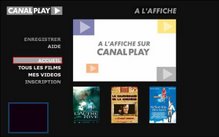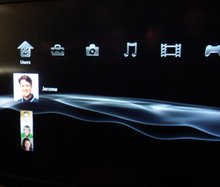There have been a lot of web articles lately, such as “Social networkers want TV airtime”, discussing the demand for PC and mobile phone messaging to be supported at the living room TV. Some companies, such as Sky have indicated this is on their roadmap.
Video sharing and distribution sites already support sending messages between site users. For example, Youtube PC-website users who find a video they like can send a link to a Friend in their Contact List. This is done via the Send Video button which appears below the video display area – as shown below.
Video sharing and distribution sites already support sending messages between site users. For example, Youtube PC-website users who find a video they like can send a link to a Friend in their Contact List. This is done via the Send Video button which appears below the video display area – as shown below.

After clicking on Send Video, a Friend from the contact list is selected (daniel78746 for the example above), and the PC keyboard is used to type in a message to accompany the Video.
The YouTube developers’ API supports receiving Video Messages. But to access messages the user must first enter their account password. The YouTube TV-website supported by active-TV enabled TVs and STBs, such as the D-link DSM-520, has been extended to enable a YouTube password to be entered using the TV remote. The TV menu now includes the menu option “Messages in Inbox” which is used to access message at the living room TV screen.

The example above shows that a Video Message was received from YouTube user “alt34ab”. The message text typed in at the sender’s keyboard, now appears on the receivers TV. In the menu entry just below the message is the video link associated with the Video Message. This is shown below.

Using the YouTube supported scheme, it is possible to send a message from a cell phone or PC to a TV. With some more development it will be possible to send messages from the TV to another TV, PC or cell phone. A beta version of the TV-website will be made available for testing at this blog-site. Look for the youtube_beta zip file with version 17 or higher.
 On the right side of the TV screen is the “related” icon which moves up and down the screen, positioned next to the currently selected menu entry. Pushing “enter” on the TV remote while highlighting the “related” icon, causes the menu to be filled with video entries which relate to the current entry. For example, the Video Message delivers a link to the “Rory Gallagher ..” video. Using the “related” button provides a list of videos which Youtube report to be related. See the example TV screen below.
On the right side of the TV screen is the “related” icon which moves up and down the screen, positioned next to the currently selected menu entry. Pushing “enter” on the TV remote while highlighting the “related” icon, causes the menu to be filled with video entries which relate to the current entry. For example, the Video Message delivers a link to the “Rory Gallagher ..” video. Using the “related” button provides a list of videos which Youtube report to be related. See the example TV screen below. 
Feedback, corrections and comments welcome. Please make contact if you would like more information about TV-website development.
Daniel Mann








